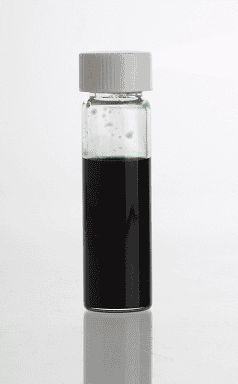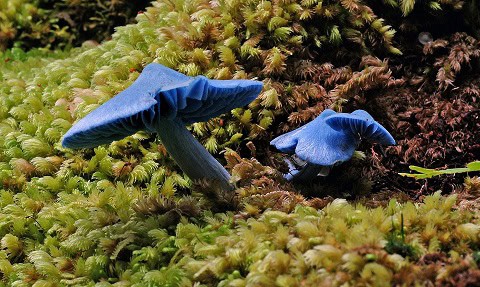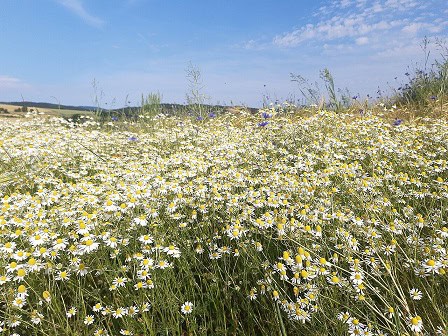 Chamomile tea is a beverage which doesn’t quite match coffee in popularity, but is soaring to ever greater new heights in the 21st century, despite having been used by humanity for an estimated 5000 years.
Chamomile tea is a beverage which doesn’t quite match coffee in popularity, but is soaring to ever greater new heights in the 21st century, despite having been used by humanity for an estimated 5000 years.
The global chamomile industry is forecast to be worth $412 billion by 2025. Chamomile is a flower belonging to the same Asteraceae family as daisies, bearing a close resemblance. The flowers are steeped to create a tea, which is most popular as a sedative. According to social media, chamomile is so powerful that it could stun an angry gorilla. It’s been called a natural tranquillizer, and an oft-mentioned experiment involved 10 people who immediately fell unconscious after drinking, and didn’t awaken for 90 minutes.
Fans claim that after weeks of brewing tea, they don’t even need to drink it – they just need to inhale its aromatic fumes and they’ll become sleepy, as their brains have been rewired.
Relaxation is chamomile’s speciality (unlike coffee), but this tea is repeatedly mentioned for acne too, both as a drink, and as a topical treatment, with some applying wet teabags directly to their skin. It’s constantly mentioned for cystic acne above all else. So let’s find out if there’s any truth amidst the hype…
All the hints at acne powers
Chamomile is a heavily researched flower, and there’s endless data related to diabetes, weight loss, even cancer. Sifting through all the evidence would take a lifetime, although if rumour is true, all the chamomile fumes you’d inhale while performing the research might allow you to double your lifespan, without even noticing, until you leave your research cave 200 years later and realise that you’re in the future. But as far as acne goes, chamomile has several promising powers, beginning with a reduction in inflammation.
Applying chamomile in oil form is able to lower the immune system messenger NF-KappaB, which in turn controls the pro-inflammatory cytokines interleukin-6 and TNF-a. Of all inflammatory cytokines, these have some of the strongest evidence linking them to acne. Chamomile’s active compound alpha-bisabolol can also reduce Il-6 and TNF-a, and even bind to sites on the proteins of those chemicals. A-bisabolol can lower lipid peroxides, or fat-soluble free radicals, an especially dangerous form for acne patients.
Chamomile is able to boost several antioxidants manufactured by the human body itself, including glutathione by 36.71%, superoxide dismutase by 26.16%, and catalase by 45.06%.
Chamomile has promising data related to the insulin-blood sugar axis, which cause oily skin and excess dead skin cell turnover when elevated, which combine to clog pores. An extract of German chamomile suppressed glycation, the process whereby excess glucose interacts with bloodstream proteins and cells to form dangerous, inflammatory molecules (e.g. free radicals). When drunk 3 times daily for 8 weeks, chamomile tea is capable of decreasing serum insulin, and glycated haemoglobin, an unstable form of haemoglobin which reacts with glucose, and can be used as a long term blood sugar tracker. Chamomile tea is neutral for macronutrients, as there’s little sugar itself, nor is there fibre which could slow down carbohydrate absorption. The explanation must be more obscure plant phytonutrients which interact with insulin pathways.
The mental powers?

These are three excellent though not especially unique acne powers, but chamomile seems to have a rare power to lower histamine. That’s the allergic reaction chemical which triggers not just itching and swelling, but atopic dermatitis and perhaps extra reddening of acne. In rats, German chamomile extract can reduce histamine levels, the itching (pruritus) and anaphylaxis caused by histamine, and also the very activation of the mast cells that produce histamine. It seems to target the interleukin-4 (Il-4) link in the chain; this inflammatory cytokine increases IgE, which itself stimulates mast cells to produce histamine.
As for the sedative/tranquiliser/stress-lowering powers, these would be great for acne if true (and great for your mind), as chronic stress is a classic cause. There’s a whirlwind of evidence, so let’s just cut straight to this review from 2024, which compiled 10 separate studies on oral chamomile and anxiety.
The result: “9 studies have concluded that chamomile is effective in reducing anxiety“. They admitted that the mechanism wasn’t understood, but stated that chamomile could be a gentler alternative to pharmaceutical medications and their side effects.
Confusion everywhere
Chamomile tea is not just popular among acne-clearing fanatics, but is constantly discussed by nootropic users, AKA people determined to sharpen their cognitive function. Theories range from stimulating GABA receptors and increasing relaxation, to knocking you out into a beneficial sedative haze that allows you to sleep better. These people mainly focus on apigenin, a powerful bioactive compound.
Apigenin also appears in celery, oregano, thyme and green chili peppers. Soaring far above these in content is parsley leaves, the second best source, but chamomile leaves are the greatest easily available source. Apigenin has very real evidence for lowering neuroinflammation, and the destruction of those neurons. It’s an agonist of the GABA-a receptor, binding to the same site on the receptor as benzodiazepine drugs. It can also decrease a protein called CD38, whose role is to deactivate NAD, itself a popular brain-boosting enzyme.
Apigenin has an avalanche of evidence, but as for chamomile tea, there’s a huge roadblock: apigenin has terrible water solubility. Experiments reveal that barely any transfers to water solutions, while modest amounts transfer to hot alcohol. It’s most soluble in potassium hydroxide and dimethyl sulfoxide, which we couldn’t care less about.
The result is that after boiling chamomile into a tea, virtually no apigenin will be transferred. Whether it’s absorbed through the gut is irrelevant, because there won’t be any apigenin arriving to begin with. Apigenin also has poor solubility in fat.
Apigenin has several promising skincare studies, including for atopic dermatitis and for protecting UV radiation. But there’s no way it can explain the benefits people have enjoyed from the tea.
The real MVPs

Luckily, chamomile has two other candidates – azulene and alpha-bisabolol. These are the signature compounds of chamomile just as much as apigenin, and while far more rarely discussed on social media, they’re almost as promising.
Azulene is an aromatic compound, which is responsible for the signature blue colour of German chamomile essential oils. “Azul” translates to blue in Spanish. Azulene-based molecules also provide the blue colour in various fungi. For example, the blue-pinkgill is a mushroom found in broadleaf forests of New Zealand, growing on the leaf-covered forest floor. It’s one of the bluest mushrooms on Earth – another name is the sky-blue mushroom – and this is due to azulene. It’s so distinctive that it featured on New Zealand postage stamps in 2002.
Another funky mushroom containing azulene is the indigo milk cap, which appears all over the northern hemisphere. Scientists have even used azulene to measure free radicals in the body. It turns out that when exposed to free radicals, azulene creatures a burst of fluorescence, which is easily trackable. As for your face, azulene seems particularly strong at improving skin moisture levels.
The second player is alpha-bisabolol, which is a sesquiterpene, like the antibacterial terpinen-4-ol from tea tree oil. A-bisabolol is colourless in liquid form and has a faint coconut aroma. While it’s found in many essential oils, German chamomile is where it was originally isolated from, and is an especially rich source. A-bisabolol is largely responsible for the chamomile flower’s aroma.
Topically, alpha-bisabolol has evidence for treating eczema, itching, venous ulcers, and atopic dermatitis. When swallowed, it has promise for preventing neuron death, amyloid plaque accumulation, and dopamine degradation linked to Parkinson’s.
Tales from ancient times
 Chamomile flowers superficially resemble a daisy, with their clear white petals and orange core like the sun, except that the core is much bigger than daisies. The Ancient Egyptians believed chamomile to be a symbol of the sun god Amon ra, making offerings of the flower in his name (whether he replied is unknown). Egyptians also used it to treat malaria, as revealed by ancient hieroglyphs, and chamomile oil was even used to anoint dead pharaohs like Ramses II (who died in 1213BC). King Tut wore sandals decorated with flowers resembling chamomile.
Chamomile flowers superficially resemble a daisy, with their clear white petals and orange core like the sun, except that the core is much bigger than daisies. The Ancient Egyptians believed chamomile to be a symbol of the sun god Amon ra, making offerings of the flower in his name (whether he replied is unknown). Egyptians also used it to treat malaria, as revealed by ancient hieroglyphs, and chamomile oil was even used to anoint dead pharaohs like Ramses II (who died in 1213BC). King Tut wore sandals decorated with flowers resembling chamomile.
Not long after, the Greek physician Dioscorides recommended chamomile in 800BC. Chamomile was recommended as one of 9 healing herbs in an Anglo-saxon manuscript from the 11th century. It was believed that the presence of chamomile could ward off infections, and it was hung over babies’ cots in bunches to keep them healthy.
By Victorian times, chamomile was recommended in combination with lavender to cure hysteria. All sorts of references were popping up by now. In 1719, we have possibly the first skincare reference, by John Quincy in Pharmacopoeia Officinalis & Extemporanea, who called chamomile a good emollient or softener of the skin. Another of his theories was that “It is used with success likewise against the Tooth-Ach, apply’d hot, in a Bag, to the Cheek”.
Nicholas Culpepe wrote in 1720 that chamomile helps “pains in the sides, gripings and gnawing in the belly”. John Pechey claimed in 1694 that a man cured his gallstones after consuming a strong decoction of chamomile flowers, before using the remedy on several other sufferers.
One of the coolest gimmicks was mentioned by medical doctor William Thomas Fernie in 1914. He claimed that if a plant is dying and drooping, and you place chamomile next to it, the first plant will recover in 9 out of 10 cases. He dubbed chamomile a physician for the garden. This is like the opposite of bananas causing other fruits they’re placed next to to ripen too quickly and go off.
There’s no doubt that chamomile is strong stuff, but can it benefit your skin? There’s no smoking gun, no single incredible acne study. Nor is there a single overwhelming power of chamomile which means that all acne patients should bow down before it, just as Ancient Egyptians did 3200 years ago. But chamomile has endless secondary powers which could easily feed into clear skin.
Which version to buy?
Worldwide, India is the top exporter of chamomile, followed by Ukraine. Like many herbs, what’s generically called “chamomile” is actually several different species. The most common two are German chamomile (Matricaria chamomilla) and Roman chamomile (Chamaemelum nobile). If you’re sipping on a cup right now, it’s almost certainly German chamomile, as this accounts for the vast majority of commercial production.
German chamomile has a single stem with many flowers attached, with a hairless stem. When extracted in an essential oil, German chamomile has a pure blue colour (because of azulene). This version thrives in temperate regions like eastern Europe and Asia, and is grown heavily in Nepal. Chamomile is a large contributor to the Nepalese economy, alongside expensive permits being handed out to mountaineers. However, German chamomile also grows in abundance by roadsides in Europe in the summer, creating some of the colour of summer, hence the alternative name “wild chamomile”. Drive at 120mph down the Autobahn (which is legal) and a blur of chamomile could be sailing past. German chamomile also grows in the northern USA, particularly on the overgrown borders of farmers’ fields.
Meanwhile, Roman chamomile is a faint blue-yellow in essential oil form, and has more of an apple flavour. It’s far less widely cultivated than the German species, but still grows abundantly in the wild. This is an evergreen plant regrowing each year from the same root system. Unlike German chamomile, just 1 flower grows from each stem.
Your goal? Don’t worry much – German chamomile is just as powerful as Roman. It’s not like cinnamon, where the rarer Ceylon cinnamon holds the powerful benefits, whereas common cassia cinnamon is much weaker.
Present day developments
Back in 2000, the US FDA ruled that chamomile was safe for usage in over the counter supplements. It was categorized as generally recognized as safe (GRAS) for use in food, essential oils and extracts. The only risk to keep in mind is if you’re allergic to plants in the daisy, or Asteraceae family. Random reactions are always a possibility too.
Recently, chamomile has been pumping new life into the Nepalese economy. Many farmers are converting from old rice paddy or wheat fields to farm chamomile, and enabling their kids to go to college whereas their parents spent years in harsh toil.
The Nepalese chamomile fields were sailing along smoothly for years, but now they have a nemesis: Tiktokers. The fields of swaying daisy lookalikes, with sacred Buddhist trees in the background, are extremely scenic places, and 2022 saw an epidemic of tiktokers turning up to film themselves dancing for a few minutes picking flowers, before leaving just as quickly, and trampling all the flowers in the process.
A video of an enraged farmer chasing Tiktokers from the field went viral, but it was too late, as they had caused millions of dollars worth of damage. In fact, farmers in eastern Nepal began farming their chamomile fields earlier than usual, not to dodge clouds of locusts on the horizon like in east Africa, but gangs of teens with smartphones. The Nepalese government had already banned Tiktokers from religious and tourist sites, but the hordes just moved to chamomile fields instead. It seems that they’re impossible to eradicate. Farmers began restricting access to their fields. Harsh punishments were promised for violators. The worst trampling happened in Sunsari district in southeast Nepal, the relatively flatter part of Nepal.
Verdict
I don’t know what will happen if you adopt chamomile tea. I don’t know if you will wake up one month later with clearer skin than you’ve ever had. I don’t know if your stress and anxiety will fade into history. But there’s no doubt that chamomile tea has real potential as an acne-clearing beverage.
If the stars align, it could be the key to unlocking the clear skin you’ve always dreamed of. I won’t downright recommend it, but at the bare minimum, chamomile could apply a little more anti-inflammatory strength to your skin, to join forces with blueberries, broccoli and zinc. The mental benefits look especially promising.
Thanks for reading!

Is it important to use a loose leaf variety to reap the full benefits?
There might be a slight difference in nutritional quality, but either is fine for someone trying to experiment with chamomile for the first time.
Does it really lower stress as much as some people say or is that more of a myth? I drink chamomile every day and it’s hard to say whether it is having some kind of effect.